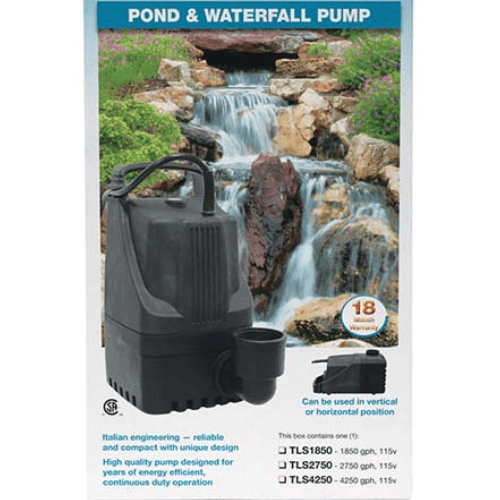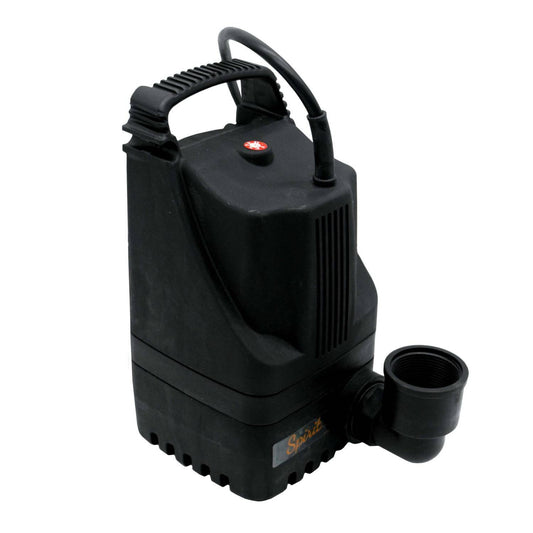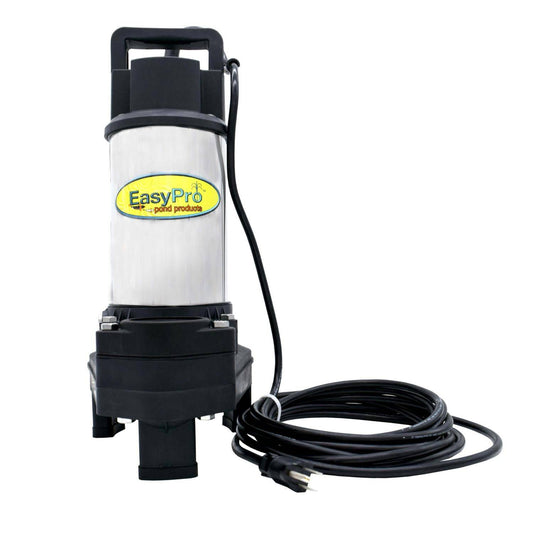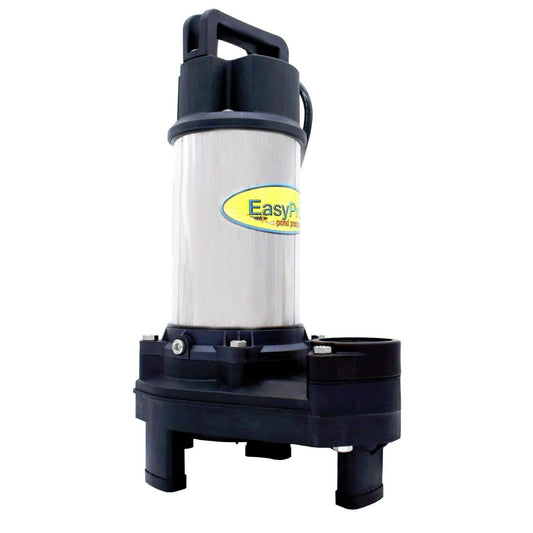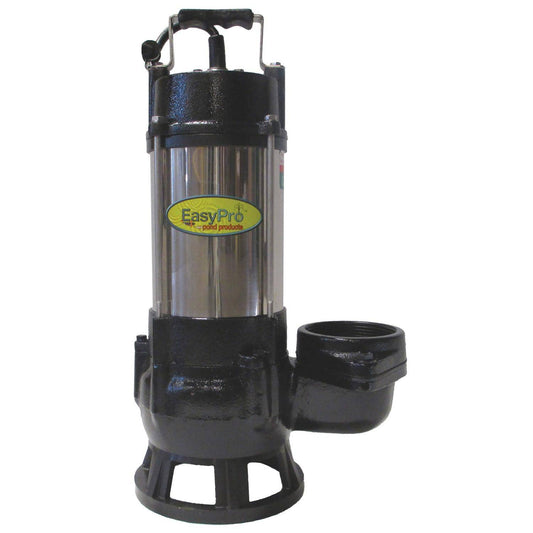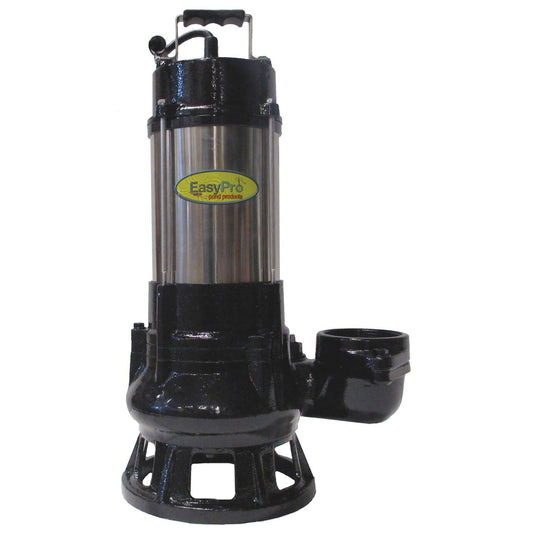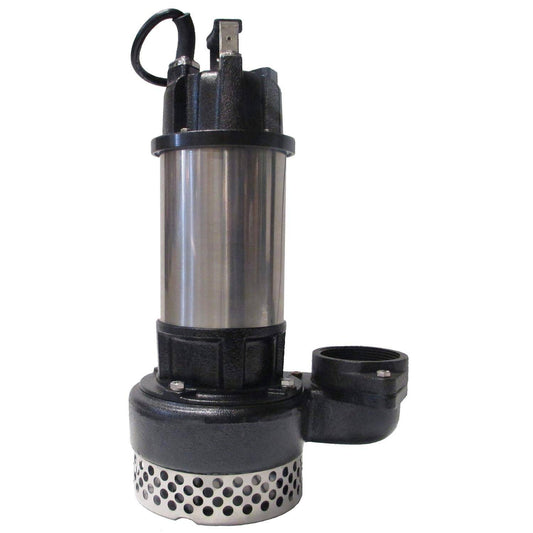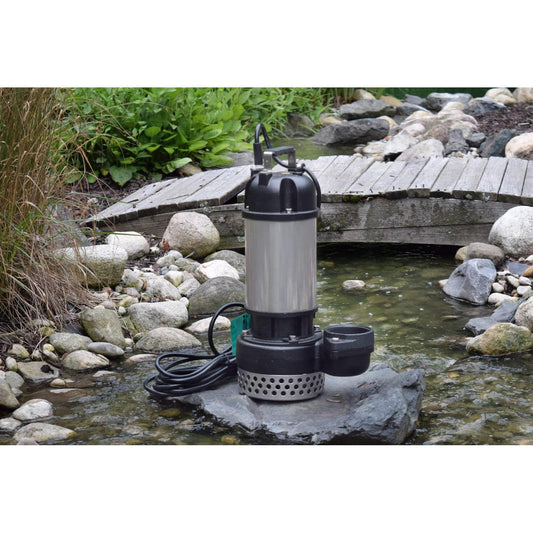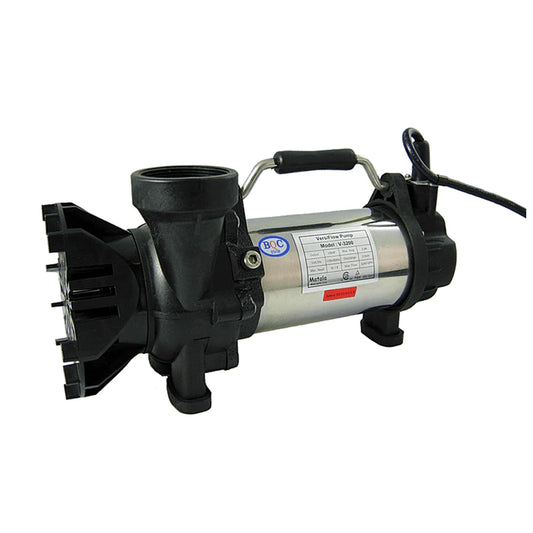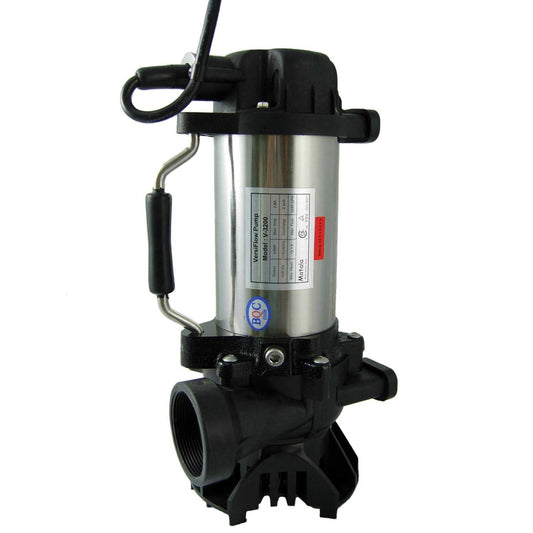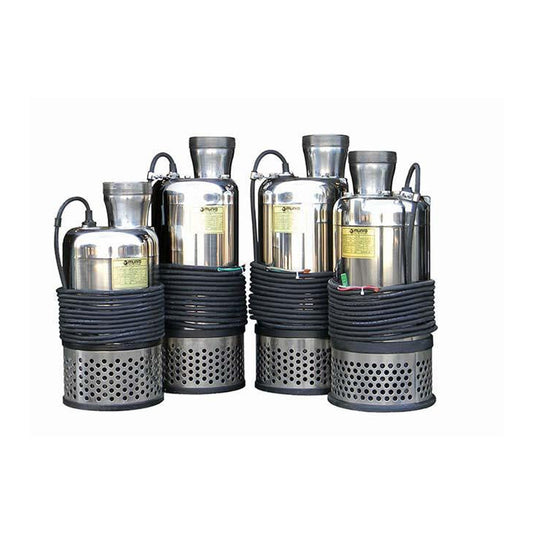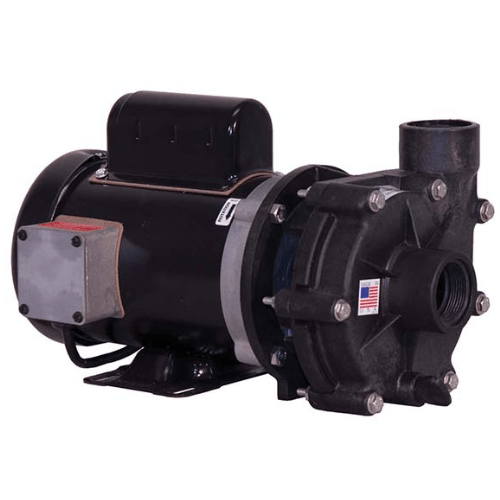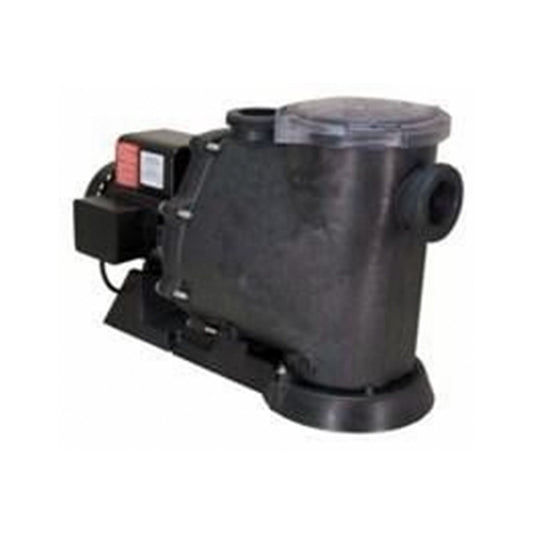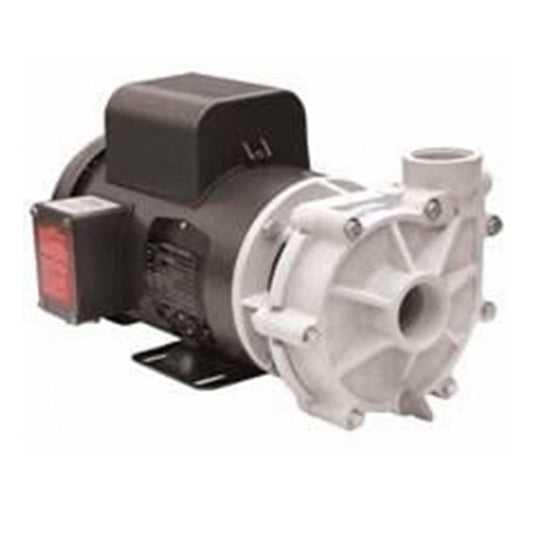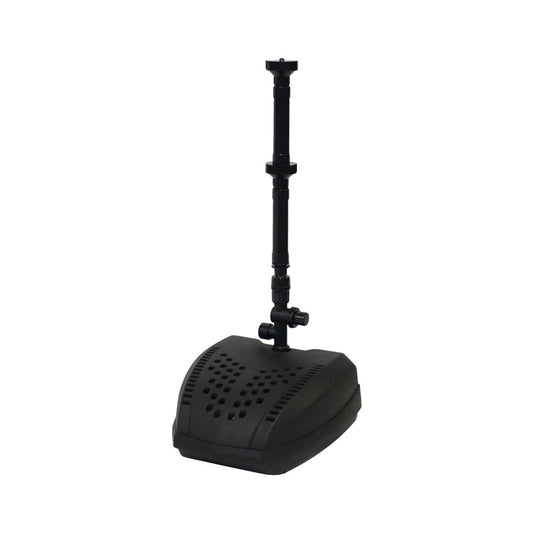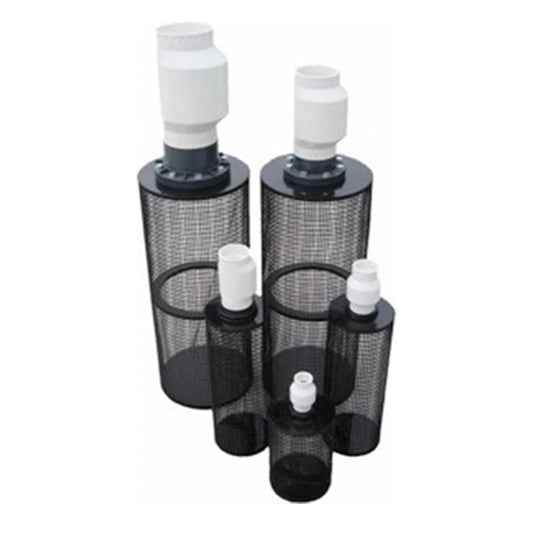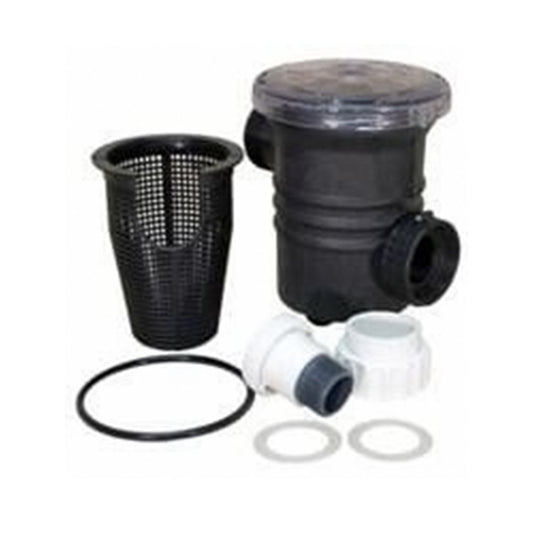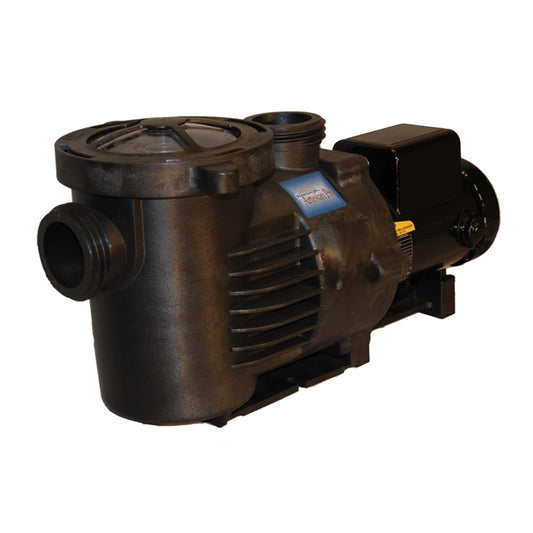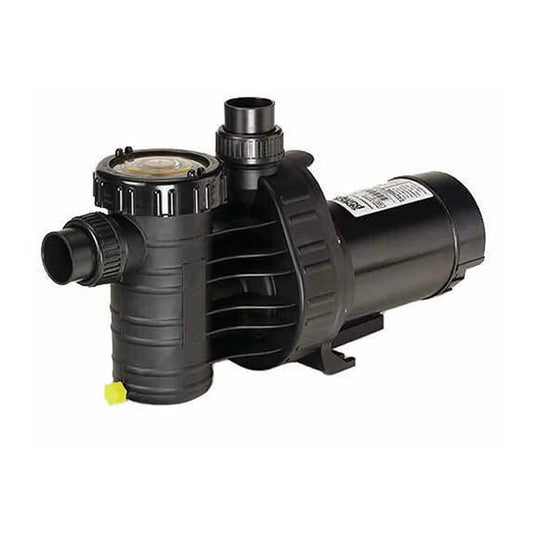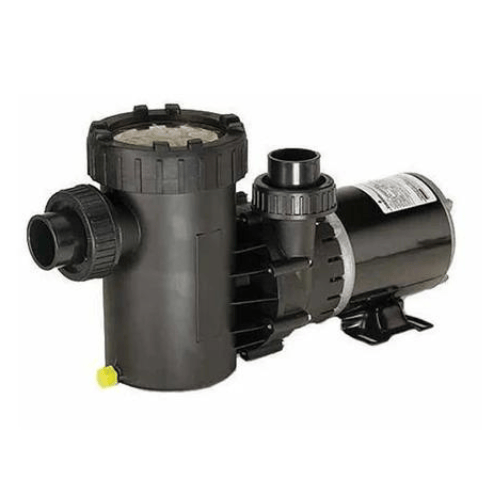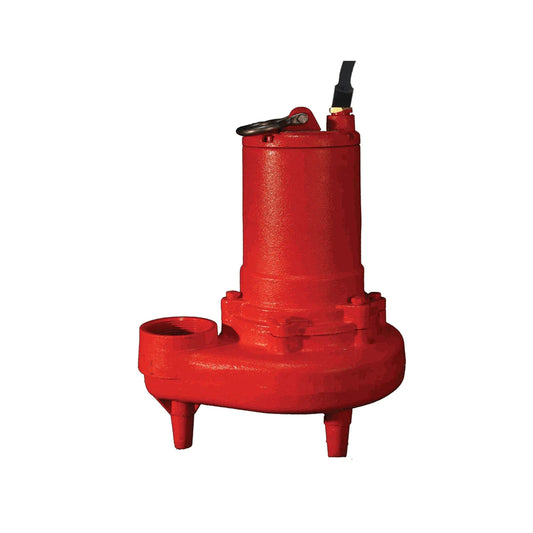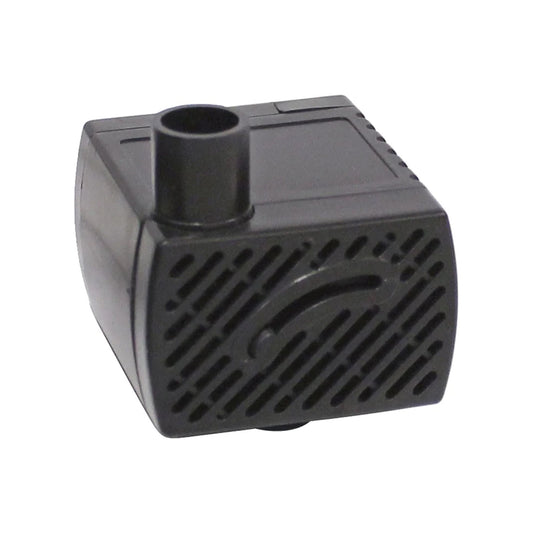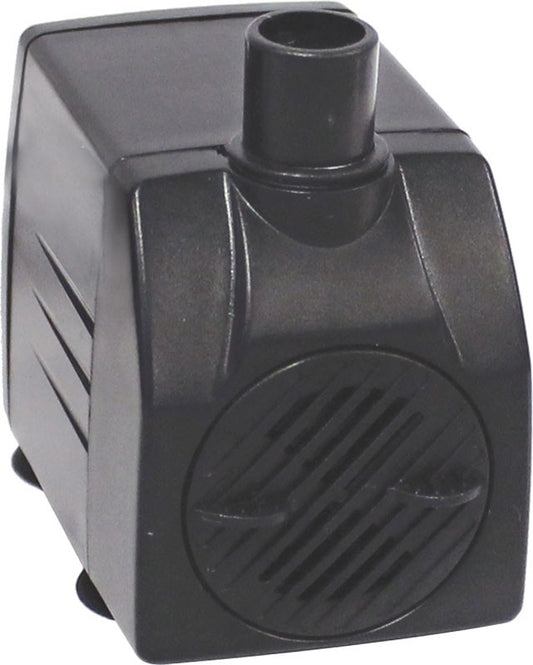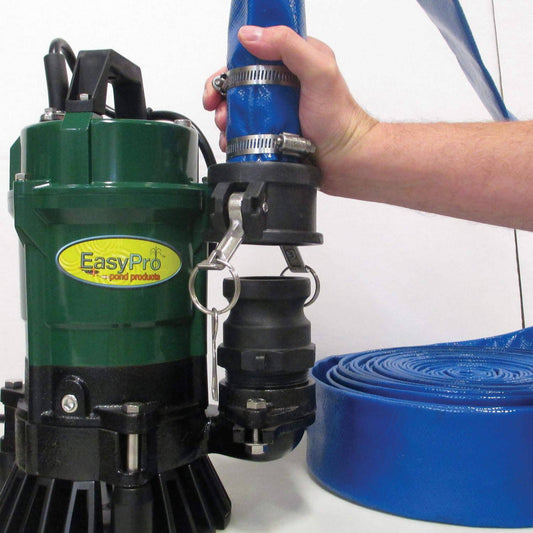Selecting pond pumps can be confusing, but it is critical that the proper pump is chosen to ensure longevity and trouble-free performance. There are several things to keep in mind:
How much volume do you need?
It takes approximately 36 gallons per minute to make a waterfall 1' wide x 1” thick. The first step in determining how much water you need is to multiply the width of the waterfall in feet x 36 = gallons per minute needed to make 1’’ thick water over your falls. This will determine your water volume.
This determines how much volume you need.
Next, determine how much head (lift) there is from the surface of the pond to the top of the waterfall. On a small, simple waterfall, the vertical lift is all you need, however on large applications, you also need to factor in friction loss from the pipe as well as each fitting to the total head.
This determines head pressure.
Now that we know water volume needed and the head height it is needed at, it makes selecting a pump much easier. You will find the head pressure in the description of each pump.
In addition to the ones shown, we have many additional pond pumps available. We specialize in high volume pumps and can supply you with virtually any size you could ever need.
Our Submersible Pond Pumps are suited for small ponds starting at 200 gallons to larger ponds over 2000 gallons. Our larger submersible pumps are ideal for high volume waterfalls. Flow rates range from 120 GPH to as high as 24,000 GPH for a larger waterfall pump. Typically, the ideal pump will circulate the total volume of the pond at least once per hour. For example, if your pond is 500 gallons, you would want to go with at least a 500 GPH pump. Submersible pond pumps are recommended for all people who don't want the unsightly pumps to ruin the esthetic value of their pond.
These are ideal for medium to larger pond sizes. For example, a pond that consists of 1000 gallons of water or more is a good candidate for one. This type of pond pump is especially effective for larger ponds because it is energy efficient. The cost of using a submersible pump in a large pond can be much higher. Also, external pumps can handle larger water flows. And an even further benefit of this type of pump for a large pond is that it works well with biological filters.
This is a type of sealless pump that utilizes a magnetic coupling to create a static shaft seal. Magnetic force aligns the outer magnet (drive magnet) and inner magnet (driven magnet) through a stationary containment shell (canister). This eliminates the hazards and mess caused by packing or mechanical seal failure. They are ideal for water gardens and ponds, statuary and hydroponic gardening, or wherever you want to pump salt or freshwater efficiently. If you choose those ponds pumps, you won't have to worry that a malfunctioning pump will cause some serious damages to your pond.
These are the most common and well-established pumps on the market. They come in many different models and can transfer fluids with high efficiency over wide range of PF flows and pressures.
These pumps are a smaller version of the high volume pumps found in the F&Q series of pumps. Although these pumps are smaller, they still have impressive flow rates and their smaller size makes them perfect for use in our large pond skimmer.
These are high-capacity pumps designed specifically for use in larger pond installations or multi-tank aquariums. Next-generation HY-Drive design combines the benefits of magnetic and direct-drive technologies to deliver an extremely quiet, energy-efficient, low maintenance pumping source.
What is The Best Pond Pump?
There is no clear answer to this question as people could value various features of pond pumps differently. For some, the volume of water that the pump for pond can pump might be of the highest importance, whereas for other customers, the look or the amount of maintenance that it needs might be more important.
If you have bought a pond pump that requires electricity to function, you should ensure that the power outlet that you'll use to power the pump has GFI (Ground Fault Interrupter). This way, if the water comes into contact with the device, you won't have to worry about your safety. Even if the power outlet that you intend to use to power pond pumps have GFI installed, you should also ensure that it is located no closer than 6 feet from the water's edge. Doing so would increase the chances that a device gets damaged. It is also possible to choose pumps for ponds that wouldn't require a source of electricity at all. You can find on our websites pond pumps that are powered by wind or sunlight. This way, you wouldn't need to worry about power outages, though that's not all. Though the price of solar or wind-powered pond pumps is higher, your electricity bills won't increase. It means that if you own such pond pumps, you could even save money in the longer run. Another essential feature to consider is the GPH of the product, though. GPH stands for gallons per hour. When it comes to the more powerful pond pumps, the manufacturers often use HP (horsepower) instead of GPH. The larger the body of water that you need to aerate, the larger GPH of the pump should be. Though in most cases the GPH of the pump could be half the size of the lake (so f.e. 300 GPH pump for 600-gallon pond), other factors could influence the efficiency of the pump.
Submersible Pond Pump vs. Surface Pond Pump
You might also be wondering if it's better to choose a submersible pond pump or surface pump. The main question that you should ask before you choose a specific pond pump that will aerate the water is "how big is the pond or a lake?". When it comes to smaller bodies of water, you might be better of using submersible pond pumps because if you want to ensure that the water is properly aerated in the pond in your garden, then you probably don't want to generate a lot of noise. Sure, maintaining adequate oxygen levels in the water is crucial, but even if the aesthetic value of the pond is unquestionable, but you cannot rest in your garden without hearing the loud noise, then it might not be worth it. It doesn't mean that every single surface pond pump generates a lot of noise, though it is often the case when it comes to the more powerful models. Unfortunately, submersible pond pumps also have some drawbacks. If the pond pump breaks down, or you notice that it is not functioning properly, you'll need to take it out of the pond, which can be quite problematic. On top of that, you might discover too late that the pond pump needs your help. That's the price that you'll have to pay if you decide to choose submersible pumps. Depending on the type of a model, issues with pumps could lead to the oil or coolant leaking out to the water. That's why, if you are worried about the quality of water in your pond, you might be better off choosing submersible pond pumps. This way, even if the product malfunctions, the consequences won't be disastrous. Magnetic pond pumps also don't require as much maintenance, which means that their lifespan is longer than the oil-powered products.
If you want to make the maintenance as easy as possible, you could alternatively choose a surface pump. This way, if there is a need for the repairs, getting it out of the water wouldn't be as difficult. At the same time, it wouldn't come into contact with the sand, which would minimize the need for frequent maintenance. It doesn't mean that surface pumps don't have any drawbacks either. They are more costly, though you won't need to spend as much on maintenance.
What are Pond Pumps Used For?
Pond pumps are used to ensure proper water circulation and oxygenation. Why is it important? If the water in the pond or lake is stagnant, its quality might get progressively worse with time. On top of that, if you purchase a device that will pump water, you will discourage mosquitoes from breeding in the water. Ensuring that oxygen levels in the water stay at optimal levels is also as important. If you fail to do so, the organic waste at the bottom of the body of water won't decompose, which would lead to the worsening of the water quality. If there is not enough dissolved oxygen in the water, dissolved gases will stay in the water. As an effect, you might notice that the water is not only dirtier but that there is also a foul smell. All of this can be avoided if there is enough dissolved oxygen in the water. This way, you could enjoy resting in your garden without having to worry about the aesthetic value of your pond. Another way to deal with the problem is to get a quality filter. If you want to buy a filter, you don't need to search long - on our website, you can find some affordable and reliable models. If you choose the best products to create an efficient aeration system, you will find out that with your help, the number of fish in the water will increase. That's because the fish need oxygen to live too! Depending on the size of the body of water, and your preferences, you could choose either a surface or submersible pump.
Do I really need to aerate my pond?
It is not always the case that you need aeration equipment to increase the levels of oxygen in the water. Very small ponds might have enough oxygen at the bottom for the decomposition to take place without any issues. If you have noticed any of the effects mentioned before - a foul smell, bad quality of water, large swarms of mosquitoes, or fish that seem sick, it might be due to the low oxygen levels. It's not the end of the world - all that you need to do is to invest in a surface or submersible aeration system with a great pump and filter. This way, you'll filter the pollutants and create a healthy ecosystem for the underwater living organisms to live in.
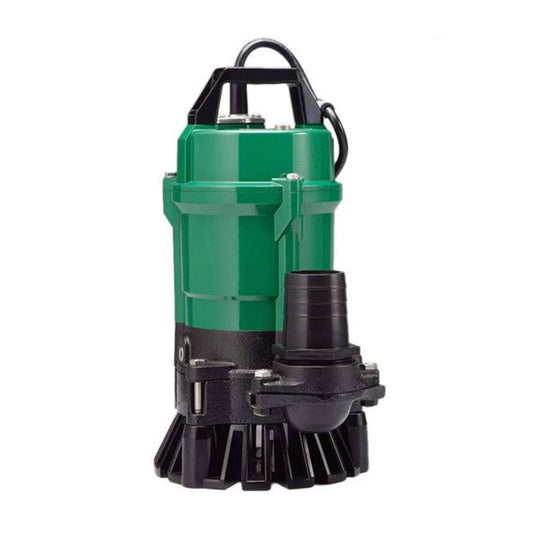
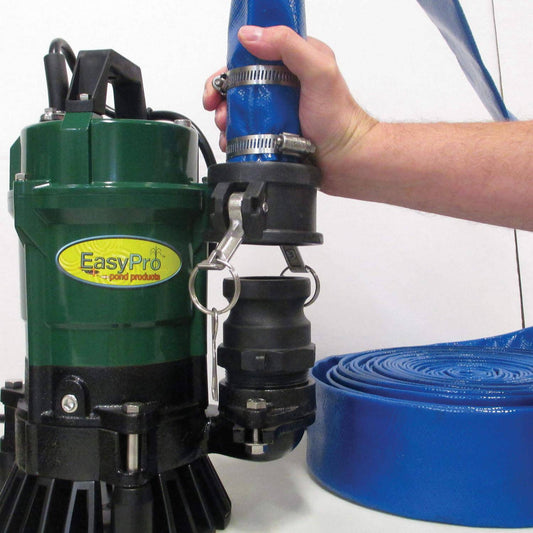 Sale
Sale





